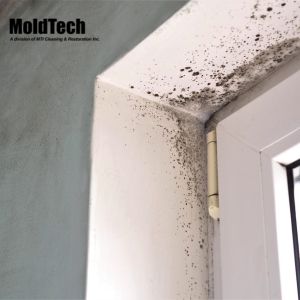How to Identify Common Mold Types in Toronto Properties
While you don’t want to find any species of mold growing in your home, knowing more about the specific type does help when it comes to mold remediation in Toronto. At MoldTech, we help homeowners learn more about mold problems through mold testing and inspection. This article will provide you with some tips on how to identify common mold types in Toronto properties. Knowing the kind of mold you face can give you valuable insight into how to effectively eliminate and reduce triggers, preventing future damage and eliminating the colony for good.
Understand the Health Risks of Mold Exposure
 At MoldTech, we take mold removal in Toronto seriously. That’s because we’ve helped thousands of families recover from the effects of mold exposure by eradicating the triggers of their coughing, sneezing, headaches, itchy eyes, and other symptoms.
At MoldTech, we take mold removal in Toronto seriously. That’s because we’ve helped thousands of families recover from the effects of mold exposure by eradicating the triggers of their coughing, sneezing, headaches, itchy eyes, and other symptoms.
Mold affects the human body by irritating tissues it comes in contact with. That can cause cold and flu symptoms (like the ones we just shared), skin issues, asthma attacks, brain fog, and more. Some types of mold, like the infamous Stachybotrys chartarum, have even been linked to hospitalizations and organ and brain-related illnesses.
Identify Common Mold Types in Toronto Properties
The only way to know for sure what type of mold affects your property is to have professional mold testing — but keeping your eyes peeled for these common types can help you spot emerging infestations before they become a serious problem.
- Aspergillus is an extremely common mold species found in moist indoor environments. Most people breathe in aspergillus regularly (it's that common!), but for some people with pre-existing risks, high concentrations can develop into the invasive disease aspergillosis.
- Cladosporium is a slow-growing mold that may appear black, olive, brown, buff, or grey. Unfortunately, its ideal growing environment correlates to the average indoor temperature and may be visible around window panes, insulation, and HVAC systems.
- Stachybotrys chartarum is also known as toxic black mold because it produces mycotoxins, a substance that causes severe reactions and illnesses. Many mold types are black-coloured, so it’s critical to treat any dark-hued mold seriously and have it checked out ASAP.
Recognize the Signs of Mold Growth
Mold tends to grow in specific rooms or areas of the home because it provides safety, food, and ideal conditions. Knowing these areas and the signs accompanying mold growth can help you discover hidden or emerging infestations. Some of the common signs of mold growth include:
- Dampness or excess moisture.
- Leaks, drips, or water spills/floods.
- A musty odour.
- Discolouration or staining.
- Poor air flow.
Seek Professional Help at MoldTech
If you suspect mold growth in your Toronto property, the first step is to have it professionally assessed and tested. At MoldTech, we strongly recommend working with a specialist team because mold, as a living fungus, is incredibly easy to spread or disturb accidentally. Our team uses certified industry standard safety and containment strategies for mold remediation in Toronto and any mold testing or inspection. This helps lower your risk, prevent accidents, and ensures removal is safer and more effective than a DIY or handyman alternative. To learn more about identifying mold growth or at-risk areas in your property.





